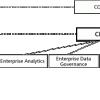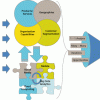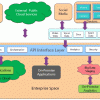Strategic advice to leverage new technologies
Technology is at the heart of nearly every enterprise, enabling new business models and strategies, and serving as the catalyst to industry convergence. Leveraging the right technology can improve business outcomes, providing intelligence and insights that help you make more informed and accurate decisions. From finding patterns in data through data science, to curating relevant insights with data analytics, to the predictive abilities and innumerable applications of AI, to solving challenging business problems with ML, NLP, and knowledge graphs, technology has brought decision-making to a more intelligent level. Keep pace with the technology trends, opportunities, applications, and real-world use cases that will move your organization closer to its transformation and business goals.
Recently Published
Is Your Architecture Successful?
The Role of Chief Data Officer in the 21st Century
Many, many years after enterprise resource planning and over two decades into data warehousing, many business executives are still frustrated over their inability to trust their company's data. They have spent millions on new technologies, only to find that the state of their data assets has deteriorated. This significantly reduces the business value of their investments. One big reason for this continuing data chaos is that companies do not manage their data as a business asset, and there is no one watching the store. In this Executive Report, we look at the role of chief data officer and why this role is so important. Not a Cutter client yet? Download a free copy of the report now.
The Role of Chief Data Officer in the 21st Century (Executive Summary)
Let's be clear: data is a critical asset along the same lines as inventory, cash, buildings, personnel, and accounts receivable. Without good data, we are unable to make the correct operational, tactical, and strategic decisions that are the difference between those organizations that live and those that die. Yet there are very few organizations that have stepped up and established the role of a chief data officer (CDO) with the responsibility and authority to deal with the many complex and interrelated issues, both political and technical, that swirl around data. In the accompanying Executive Report, we look at this role and its responsibilities.
"Today, social, mobile, analytics, and cloud are the cornerstone technologies driving innovation inside many if not most enterprises."
-- Vince Kellen, Guest Editor
Implementation of social media crowdsourcing helped Starbucks understand customer preferences and generate new ideas that resulted in US $180 million in revenue in the first year, making a big impact on the top line.1
Amazon reported that 30% of sales were due to its analytics-based recommendation engine.2
The world is going through a massive digitalization in the consumer ecosystem due to the influence of social, mobile, analytics, and cloud (SMAC). The evolution of SMAC throws integration challenges in front of enterprises, forcing them to handle various SMAC endpoints in the simplest way.
From time to time, the corpus of information technologies absorbs new classes of technology, often in one fell swoop. The collection of technologies discussed here -- social, mobile, analytics, and cloud (SMAC) -- represents such a bundle. A decade ago, social, mobile, and cloud technologies were more a gleam in the eye of innovators than part of the CIO repertoire. Back then, analytics were frozen in a period of glacial change that was moving far too slow to attract much attention except from analysts trying to divine which bigger vendor was going to buy which smaller vendor. Today, social, mobile, analytics, and cloud are the cornerstone technologies driving innovation inside many if not most enterprises. In this issue of Cutter IT Journal, we bring together five articles with some different looks at the opportunities and challenges SMAC poses.
While adoption of social technologies may lag behind the others due to their newness, IT leaders have had the concept drilled into their heads constantly over the past few years. In our first article, Cutter Senior Consultant Dave Higgins and coauthor Sam Clark rightfully point out the distinction between public social networks (e.g., Twitter, LinkedIn, Facebook) and private social networks (those dedicated to a specific company or organization). After all, the way human beings network with each other is complex. Humans may maintain different sets of relationships for different purposes. For example, many of us have a Facebook presence for connecting with friends and family and a LinkedIn presence for more professional needs.











